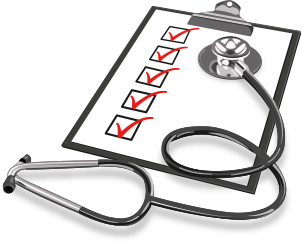Mold Exposure Symptoms
There are over 100,000 species of mold that can grow from water damaged environments. The following is a list of mold exposure symptoms that are commonly reported, we divide the list into 3 levels of severity.

Is Your Home Making You Sick?
Not sure if your environment is affecting your health? We have designed a free online health test to help you get some answers.
Mold Symptoms
Mold symptoms can range from moderate to severe. Both the U.S. Centers for Disease Control (CDC) and the U.S. Environmental Protection Agency (EPA) have classified mold toxins as cancer causing. The health effects can vary greatly depending on 4 risk factors, below is a brief description of each one.
Level 1
Early Exposure to Mold
- Headaches
- Eye Irritation
- Sneezing
- Itching
- Skin Redness
- Skin Rash
Level 2
Advanced Exposure to Mold
- Breathing Disorders
- Nose Bleeds
- Ear Infections
- Chronic Sinusitis
- Chronic Bronchitis
- Pain in Muscles and Joints
- Asthma
- Nausea
- Vomiting
- Diarrhea
- Coughing up Blood
- Nervous Disorders
- Heart Palpitations
- Blurred Vision
- Swollen Glands
- Weight Loss
- Chronic Fatigue
- Loss of Appetite
- Depression
- Open Skin Sores or Lesions
- Fungal Nails (Hands or Feet)
- Sexual Dysfunction
- Thyroid Conditions
Level 3
Long Term Exposure to Mold
- Blindness
- COPD
- Hypersensitivity Pneumonitis
- Histoplasmosis
- Memory Loss (long-term)
- Bleeding lungs
- Kidney Failure
- Liver disease
- Cancer
- Death
Misdiagnosed?
Mold exposure can be commonly misdiagnosed as other ailments, the following is a list of possible misdiagnoses.
- Fibromyalgia
- Rheumatoid Arthritis
- Inflammation
- Lupus
- Histoplasmosis
- COPD
- Lyme Disease
- Hypersensitivity Pneumonitis
4 Factors to Consider

Mold Spore Levels
Concentrated amounts of mold spores can amplify mold symptoms. When preforming air quality testing, elevated mold spore counts are defined as the indoor levels of mold spores being at higher levels than naturally occurring outdoors. Often the higher an environment’s mold spore count, the more severe mold symptoms can become.

Mold Toxins
Mold toxins have been connected to some of the most harmful mold symptoms. Mold will produce toxins at different points of its life cycle. A dangerous toxin that comes from mold are mycotoxins. Mycotoxins will attach to fine and ultra-fine mold spore particulates making them extremely difficult to remove from the human body. Mycotoxins have been classified as a carcinogen (cancer causing) by the CDC and EPA.

Time of Mold Exposure
Prolonged mold exposure can lead to a host of mold symptoms including mycotoxicosis. Mold fine and ultra-fine particulates build up in the human body over time. Often the longer you are in a mold contaminated environment the higher your risk factors become for more severe health effects.

Immune System
Mold can affect everyone’s immune system in drastically different ways. Your immune system will dictate mold symptoms such as allergic reactions and invasive fungal infections. It is not uncommon for one member of the household to have more adverse mold symptoms than another. If left untreated mold exposure can lead to a lowered or compromised immune system.

Total Health Package
Ask about our Total Health package, designed to identify the cause of mold sickness.
Inspection Includes:
Full Visual Inspection
3 Base Samples
1 Mycotoxin Test
1 Bacteria Test
Moisture Readings
Detailed Microbiology Report
Suggested Course of Action
FAQ
How do you know if mold is making you sick?
There are several tests you can take to make a connection between your health and your environment. The most common form of mold testing connected to health is a mycotoxin test. This testing has the ability to be run both medically and environmentally. The health symptoms for mold exposure can range from moderate to severe depending on the species of mold and the toxins it is producing. Medical testing in conjunction with environmental testing may be necessary to definitively identify mold sickness.
What are the long-term effects of mold exposure?
The long-term effects of mold exposure can result in mycotoxicosis, neurological disorders, severe breathing disorders, and fungal infections. Exposure severity will depend on the species of mold, amount of time in the contaminated environment, volume of spores, and an individual’s immune system.
How long does it take to get sick from mold exposure?
Mold can make you sick in 3 ways (1) allergic reaction (2) Invasive fungal infection (3) Mycotoxin poisoning. The amount of time it takes to experience any of these ailments will vary greatly upon an individual’s immune system, but studies have found that prolonged exposure to mold will generally result in some form of adverse health effect.
How do doctors test for mold?
Some of the commonly prescribed medical tests for mold sickness are Mycotoxin testing, IGE testing, Scratch Allergy testing GI testing, and DNA testing. Your doctor will often use your environmental report to identify the appropriate corresponding medical test.


